How to Select Millwork Profiles + The Trim I Chose
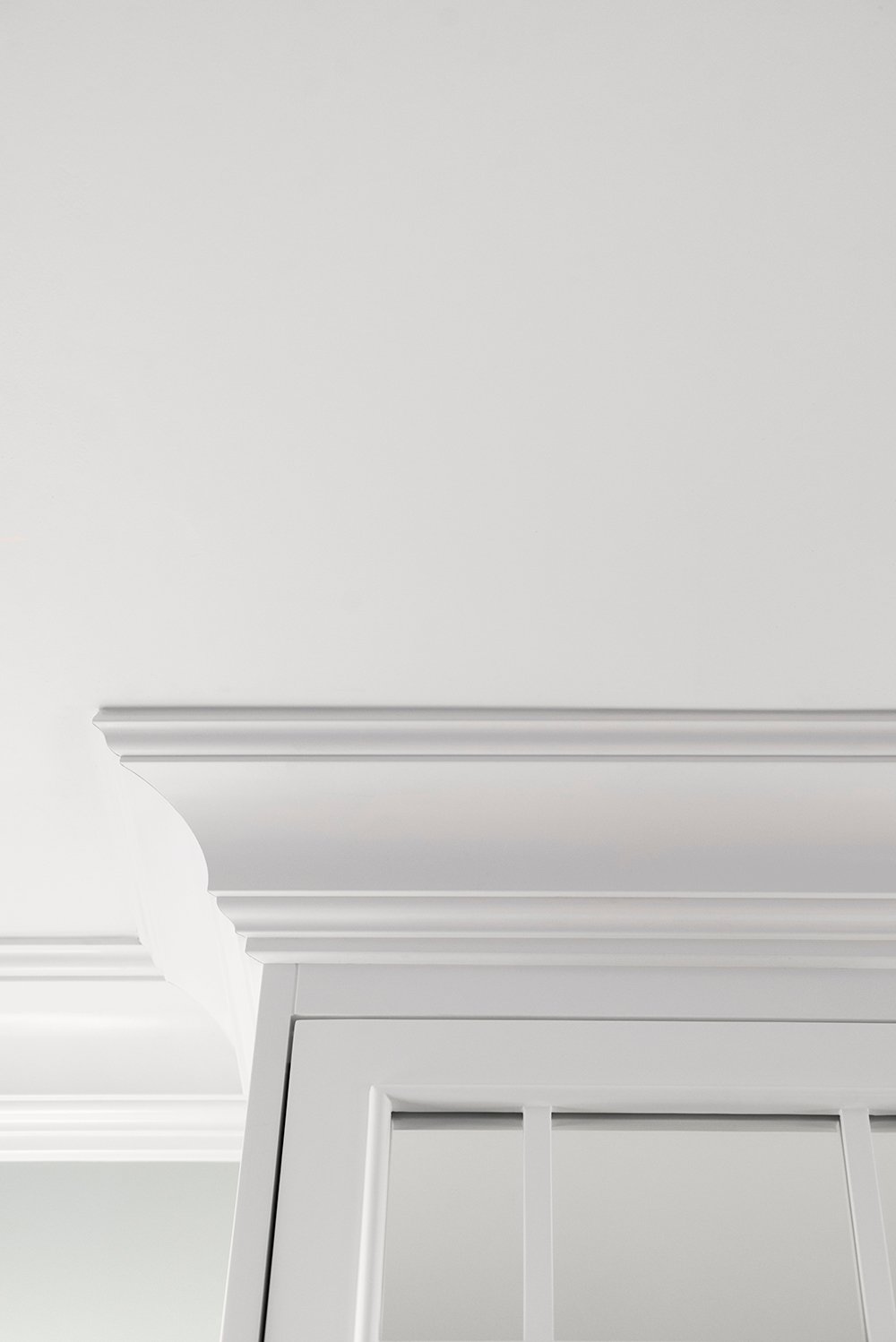 I get A LOT of questions about millwork and I vowed to share more about that during this home renovation. It’s easy to see why people are so interested because millwork really has the ability to transform a space in a BIG way. Rather than thinking of it as an afterthought, I always encourage people to begin the process with architecture & millwork in mind because it’s really the foundation for the room. After the positive response to my previous millwork post, I learned that this is certainly a topic of interest… making selections, specifically. I know that portion of the design process can seem overwhelming and intimidating, so I wanted to break down and share how I selected millwork for our current renovation. Click through for my tips on how to choose millwork profiles, and to see what we’ll be using throughout the majority of the house.
I get A LOT of questions about millwork and I vowed to share more about that during this home renovation. It’s easy to see why people are so interested because millwork really has the ability to transform a space in a BIG way. Rather than thinking of it as an afterthought, I always encourage people to begin the process with architecture & millwork in mind because it’s really the foundation for the room. After the positive response to my previous millwork post, I learned that this is certainly a topic of interest… making selections, specifically. I know that portion of the design process can seem overwhelming and intimidating, so I wanted to break down and share how I selected millwork for our current renovation. Click through for my tips on how to choose millwork profiles, and to see what we’ll be using throughout the majority of the house.
*This post is in partnership with Metrie. All content, ideas, and words are my own. Thank you for supporting the brands that allow us to create unique content while featuring products we actually use & enjoy!
Obviously we only have one finished room in our current home with the accurate millwork installed (the guest bathroom), so I hope you can handle a *few* more shots / examples of that particular space (although I’m pretty sure I’ll personally never tire of looking at it). I just think it’s nice to show examples.
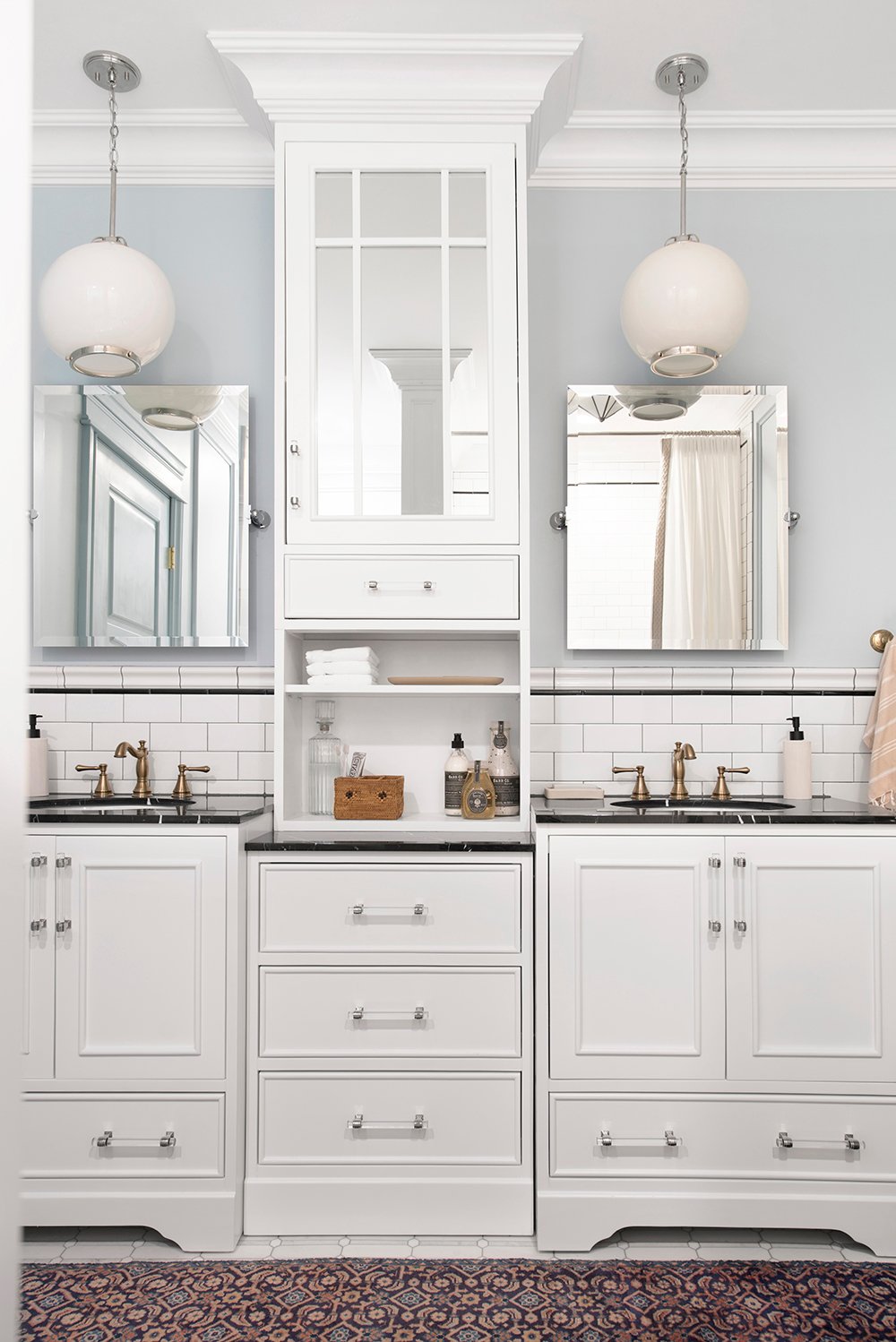 I LOVE millwork. A room doesn’t feel complete to me without it. It would be like serving a cake without icing (which is basically criminal!). I’m hoping to make the selection process a lot easier for you guys. I’ve read your messages and the memo came through loud and clear… many of you aren’t sure where to start.
I LOVE millwork. A room doesn’t feel complete to me without it. It would be like serving a cake without icing (which is basically criminal!). I’m hoping to make the selection process a lot easier for you guys. I’ve read your messages and the memo came through loud and clear… many of you aren’t sure where to start.
It’s really easy to dive down a Pinterest rabbit hole, saving images of over-the-top spaces with intricate millwork that you’d love to replicate (or maybe that’s just me?). While inspiration is a good thing, replicating the millwork from that gorgeous Parisian flat you found on Pinterest with crazy tall vaulted ceilings, it probably wouldn’t be a great fit for your single story mid century rambler. It would feel all sorts of wrong! I thought it might be best to start with some basic design “rules” that will help you first determine what style might be best suited for your home.

STEP 1- CHOOSE A STYLE
I’ll use my current home and previous home as examples for this topic! Our current home is certainly more grand looking than our previous home. It’s over triple the size, it’s more impressive from an exterior architectural standpoint, the ceilings are taller, the exterior is classic colonial, and the aesthetic is much more traditional. This house really lends itself to more ornate millwork because of that. You’ll notice more curves, ogee edges, and drama that mimics the exterior of the home (columns, etc).
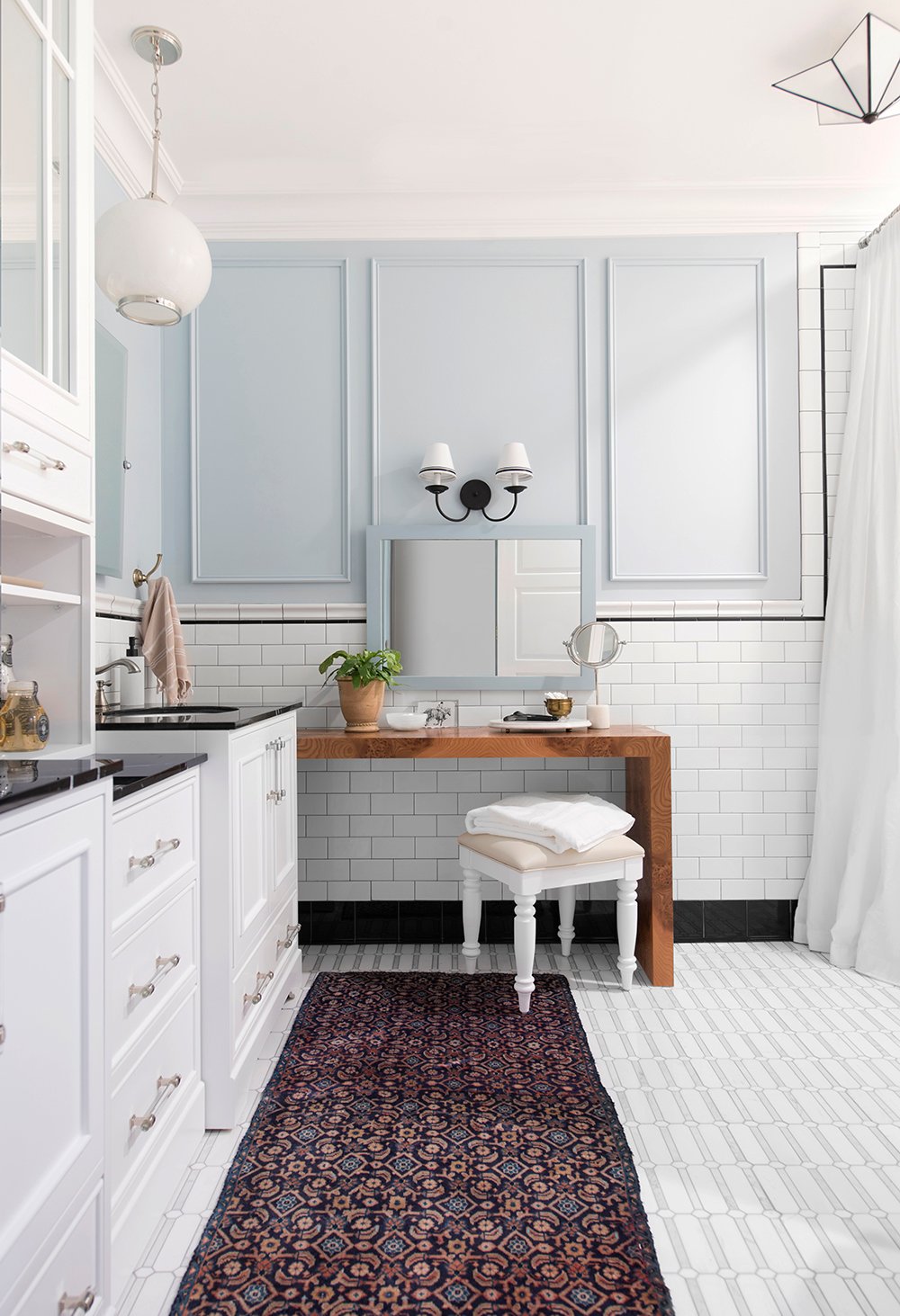 Our previous home was pretty modest, composed of a single level. It had a mid century / rambler architectural vibe, and was pretty standard in terms of structure… standard height ceilings, modest sized rooms, COZY would probably be the best word to describe it. I opted for transitional millwork that wasn’t overly large, but still had some nice detail. It wasn’t too modern, but it also wasn’t dramatic or super curvy. It fit the home, it felt cozy, and wasn’t overbearing.
Our previous home was pretty modest, composed of a single level. It had a mid century / rambler architectural vibe, and was pretty standard in terms of structure… standard height ceilings, modest sized rooms, COZY would probably be the best word to describe it. I opted for transitional millwork that wasn’t overly large, but still had some nice detail. It wasn’t too modern, but it also wasn’t dramatic or super curvy. It fit the home, it felt cozy, and wasn’t overbearing.
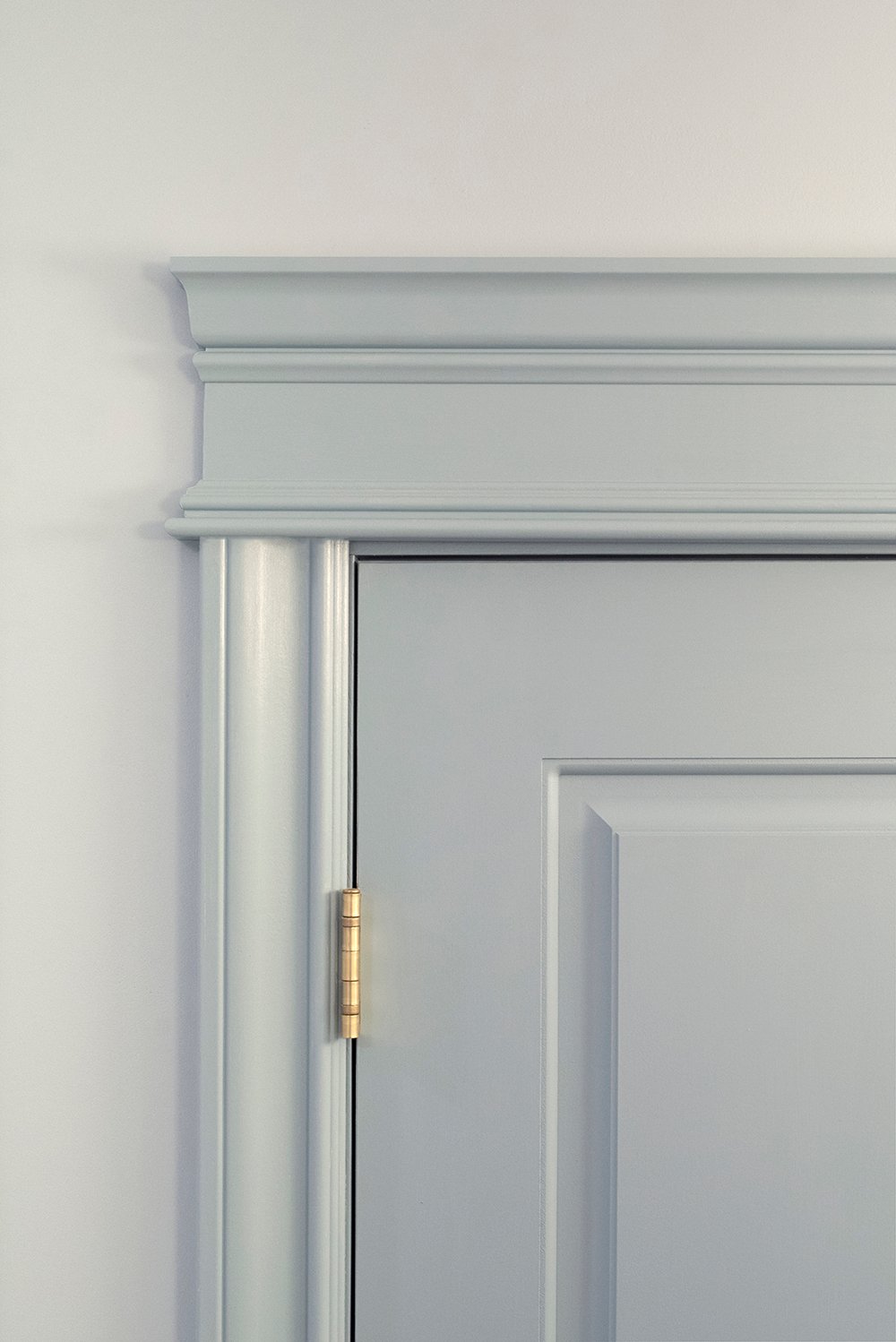 The goal when installing millwork should always be to enhance the home’s architecture. It should compliment it, not distract or draw emphasis in strange ways. All of that to ask… what type of home do you have? That’s the first question to ask yourself. Here are a few examples of home styles, and the accompanying trim I might pair them with:
The goal when installing millwork should always be to enhance the home’s architecture. It should compliment it, not distract or draw emphasis in strange ways. All of that to ask… what type of home do you have? That’s the first question to ask yourself. Here are a few examples of home styles, and the accompanying trim I might pair them with:
- Classic Farmhouse // shaker, flat style millwork
- Craftsman Bungalow // square, mission style millwork
- Industrial Loft // simple, flat transitional millwork
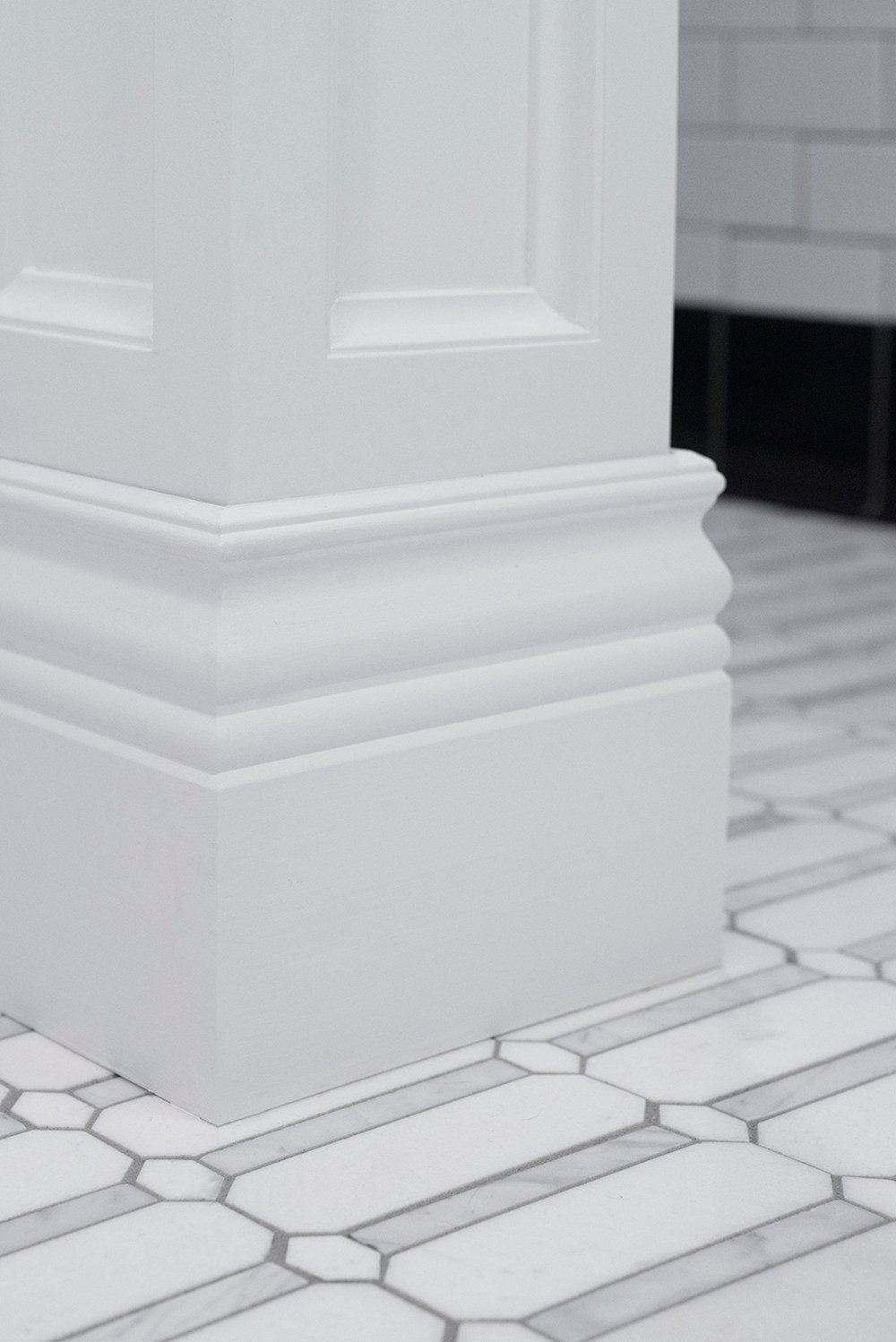 If you have no idea what your home’s architecture or style is, or what it would pair well alongside- that’s ok! That’s honestly one of the reasons I love Metrie (we used their millwork in our previous house too). If you’re not sure where to start, most of their collections break down the style choices for you, grouping together a family of products. It essentially takes the design work out of the equation. This particular category includes millwork within: modern farmhouse, new traditional, bohemian, vintage industrial, shabby chic, etc. This finishing collection includes: french curves, true craft, fashion forward, very square, and simplistic styles. It really eliminates the guesswork. I always stick to a collection for consistency. That brings me to the next step in my design process, after a collection or style has been selected…
If you have no idea what your home’s architecture or style is, or what it would pair well alongside- that’s ok! That’s honestly one of the reasons I love Metrie (we used their millwork in our previous house too). If you’re not sure where to start, most of their collections break down the style choices for you, grouping together a family of products. It essentially takes the design work out of the equation. This particular category includes millwork within: modern farmhouse, new traditional, bohemian, vintage industrial, shabby chic, etc. This finishing collection includes: french curves, true craft, fashion forward, very square, and simplistic styles. It really eliminates the guesswork. I always stick to a collection for consistency. That brings me to the next step in my design process, after a collection or style has been selected…
STEP 2- CHOOSE HOW MUCH YOUR HOUSE NEEDS
Can your home handle lots of millwork details (crown moulding, panel moulding, baseboards, shoe moulding, casing, architrave, architrave fillers, wainscoting, shiplap, board & batten, etc)? There are a LOT of products to consider, and this is not a “more is more” situation. It totally depends on the interior aesthetic and exterior architecture of your home. A larger, traditional home with taller ceilings can handle a lot more millwork than a modern rambler or industrial city loft with standard height ceilings and smaller rooms. Style also comes into play here.
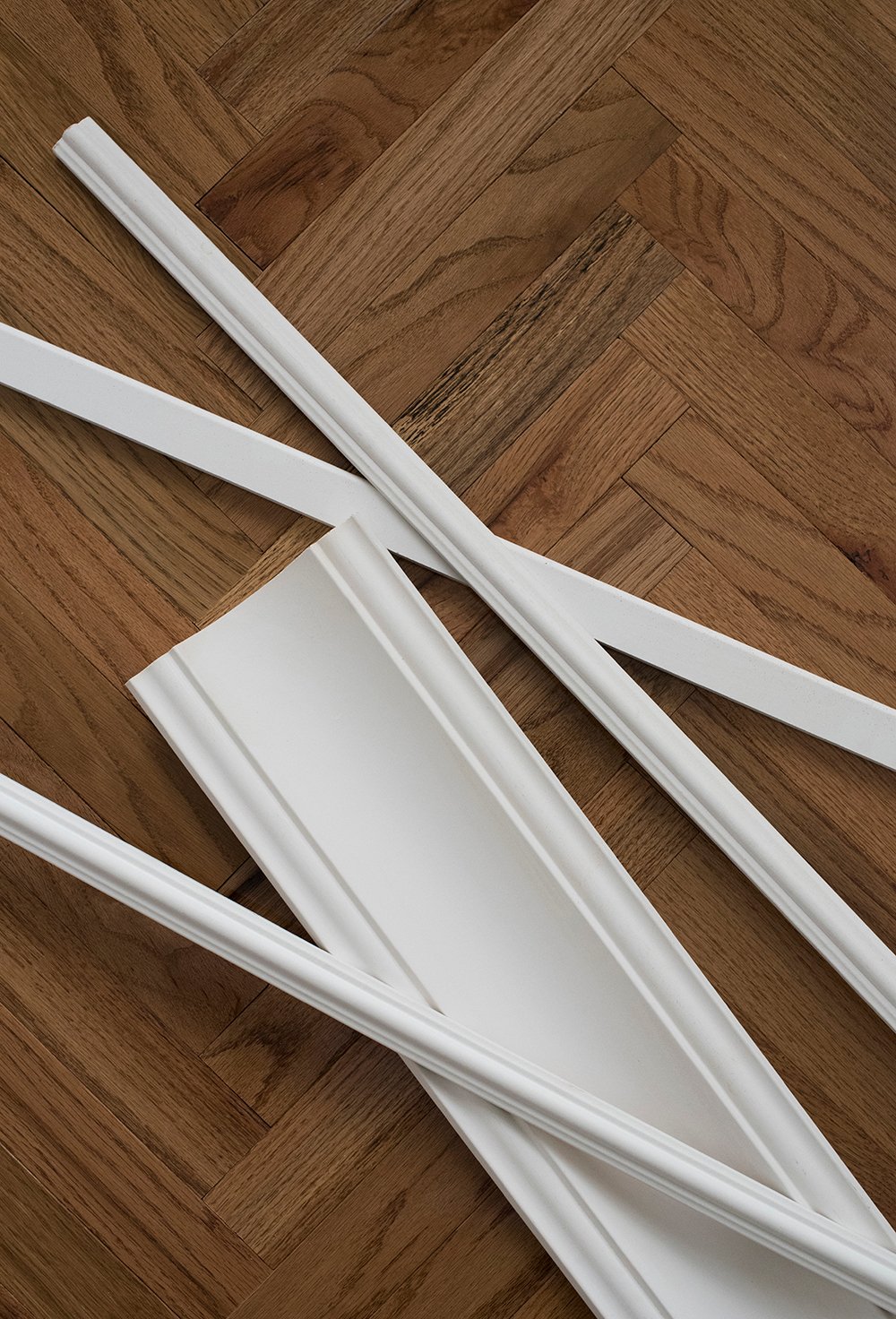 This is what we’ll be using throughout our current home… you can also see these millwork products installed in the guest bathroom reno we just completed.
This is what we’ll be using throughout our current home… you can also see these millwork products installed in the guest bathroom reno we just completed.
I never would’ve used an architrave in our previous home. Why? It didn’t boast the ceiling height, and was far too modern. Narrow down what is appropriate for your home. Luckily, if you shop Metrie by their collections, they only offer certain product groupings. For instance- if you love shiplap, but live in an industrial loft and choose the “Vintage Industrial” category, you’re not going to see any shiplap options because it just doesn’t work with that aesthetic. It kind of helps to narrow your millwork choices based on the style of your home and keeps you from making a poor design decision. You wouldn’t want to deck out modern home with loads of panel moulding and intricate millwork, and on the contrary- this feature also reminds you what is available for your super traditional home. Would you have known about or remembered that architrave if the product wouldn’t have populated within your specified grouping? It’s really a handy tool! As a designer, even I forget things and I really appreciate having all of my options displayed together.
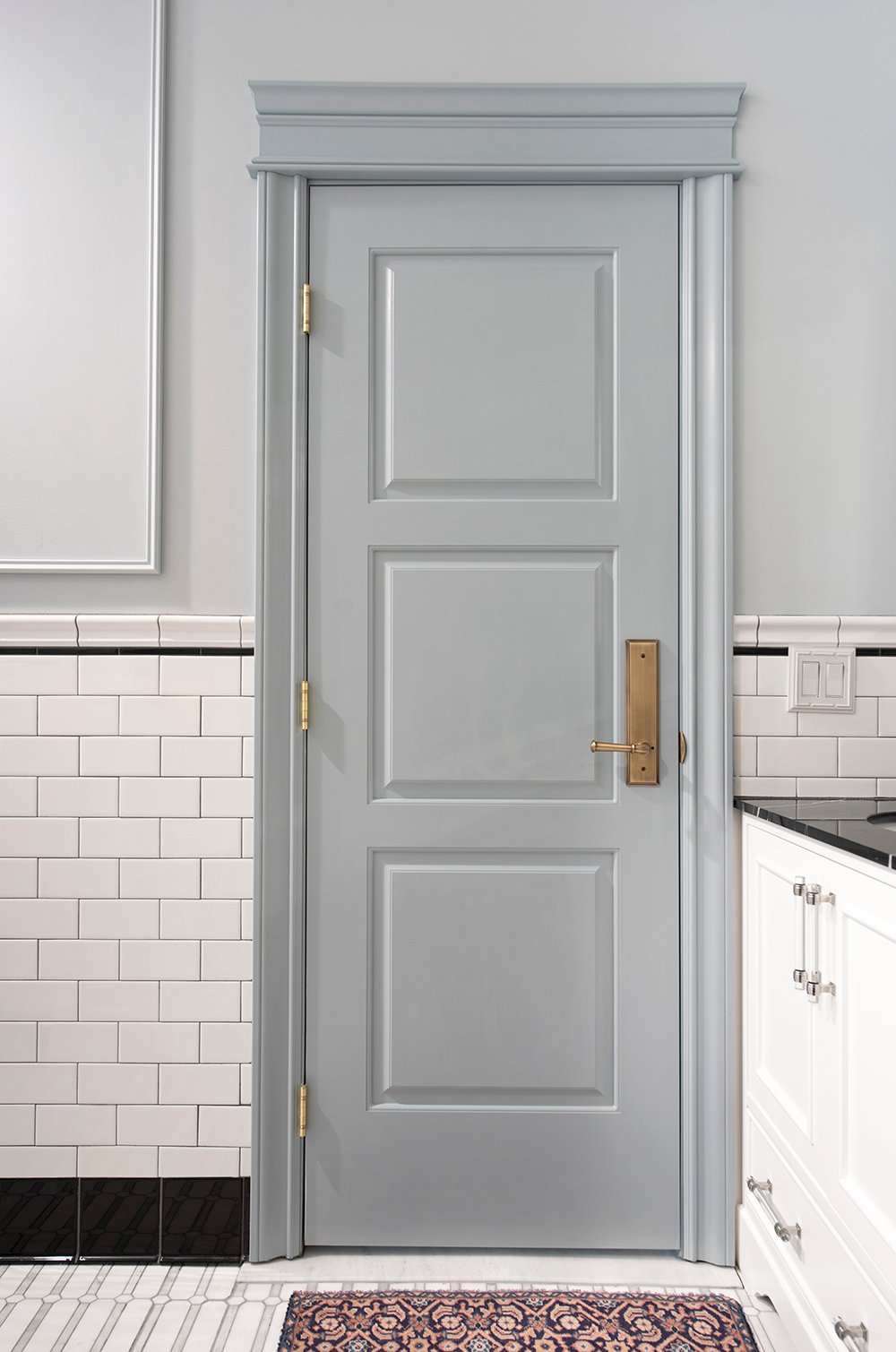
STEP 3- SELECT THE SIZE
After style, scale is the most important thing to consider when selecting your millwork. You want to keep things architecturally and historically accurate based on the style of your home, or it can begin to feel weird and actually have the opposite effect. Our current crown moulding is nearly double the size of what we used for our previous renovation, but it makes perfect sense for this place. I considered the tall ceilings, the grand exterior, the spacious rooms, and the traditional colonial aesthetic.
In my previous post we chatted about math (I know, I know… math is the worst), and how that is truly the best way to calculate most millwork projects. For example, I can’t tell you how high to end your wainscoting or board & batten because it is unique to your house, but Metrie does offer general guidelines for which products are suitable for specific ceiling heights. See the 9’+ on the bottom left of the thumbnail images below? That indicates the product is suitable for ceilings 9 feet and taller. It’s incredibly helpful if you don’t want to do the math, scale it out, or simply aren’t sure what ratios work well.
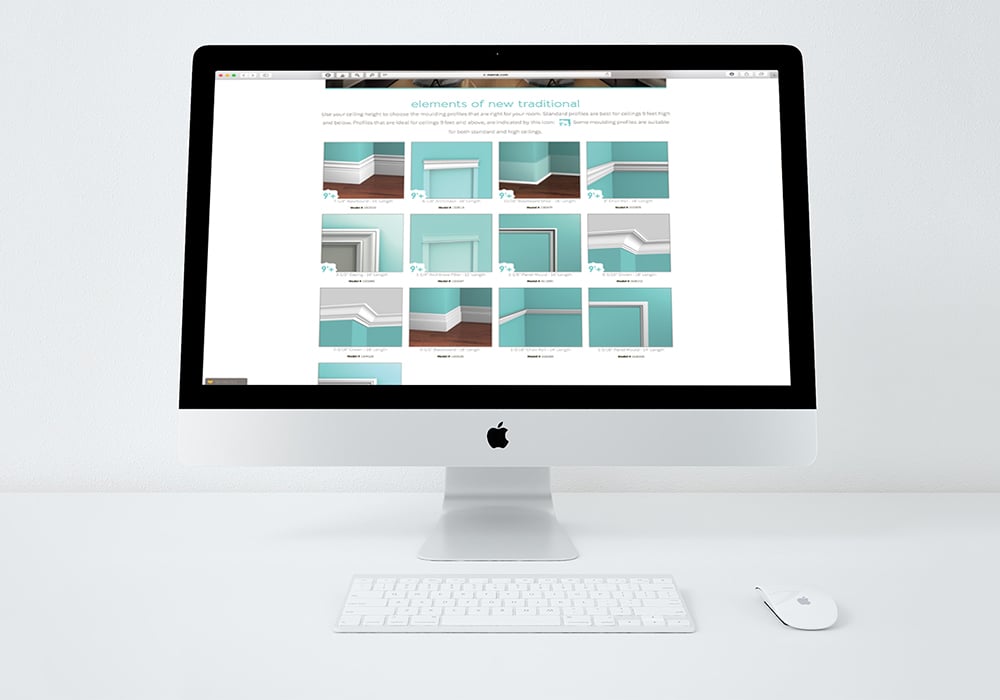 I’m going to sing my Metrie praises one last time… and I promise it’s because I LOVE their products and think they’re a wonderful resource. FYI, I’m not getting paid for this post (although I did receive some complimentary millwork for our bathroom). Here is why they’re the easiest company to use if you’re unsure about where to start or what you need:
I’m going to sing my Metrie praises one last time… and I promise it’s because I LOVE their products and think they’re a wonderful resource. FYI, I’m not getting paid for this post (although I did receive some complimentary millwork for our bathroom). Here is why they’re the easiest company to use if you’re unsure about where to start or what you need:
- They break down style & aesthetic with easy categories (complete with visuals).
- Each category is historically accurate in terms of what pieces fit within the collection (if you don’t see a shiplap product appearing in your “bohemian” category, that’s because it doesn’t fit the aesthetic and you should not be using it).
- You can get samples. We grab ours from our local showroom / warehouse.
- They state what ceiling height is suitable for certain products.
- The quality is amazing (Emmett swears by their millwork).
- If you’re unsure of a term or unfamiliar with what something is (example: architrave), they give color coded visual examples so you see where each product would be applied or installed.
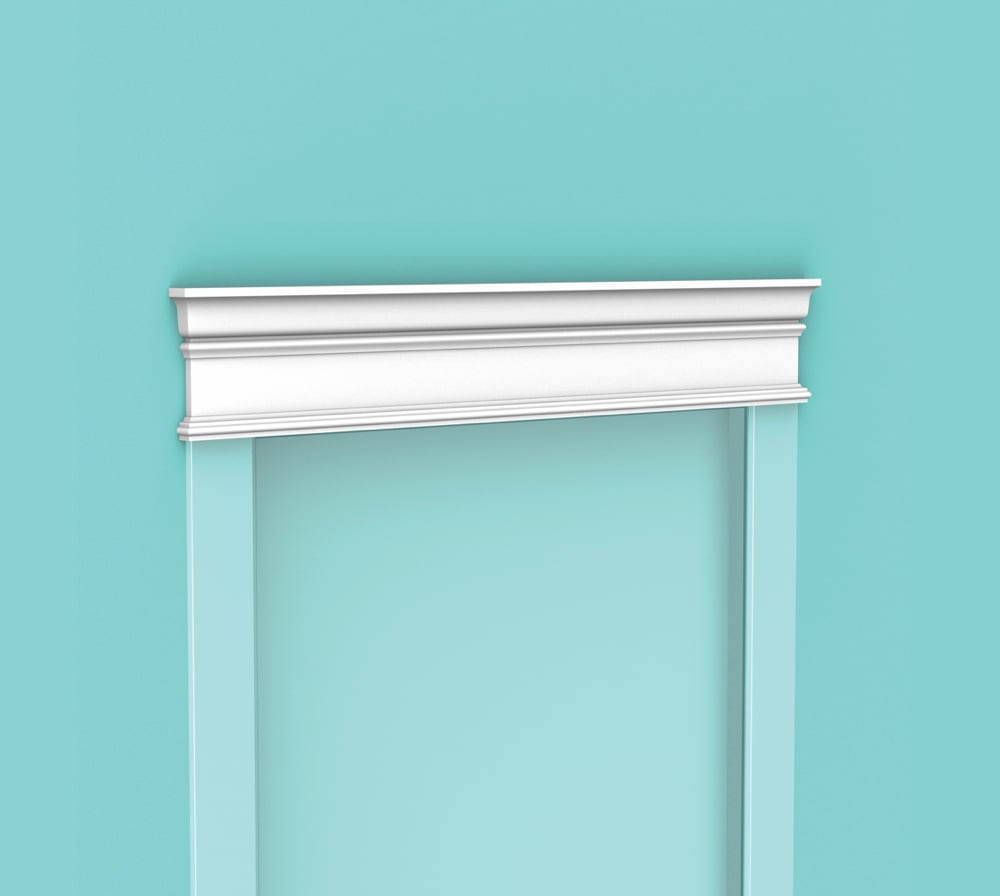 Alright- I know that was a hefty post with LOTS of info, but hopefully it was helpful! I have a bunch of fun millwork posts on the calendar, but please let me know in the comments below if there is anything specific you’d like to read about. Questions? Thoughts? I’m all ears!
Alright- I know that was a hefty post with LOTS of info, but hopefully it was helpful! I have a bunch of fun millwork posts on the calendar, but please let me know in the comments below if there is anything specific you’d like to read about. Questions? Thoughts? I’m all ears!
